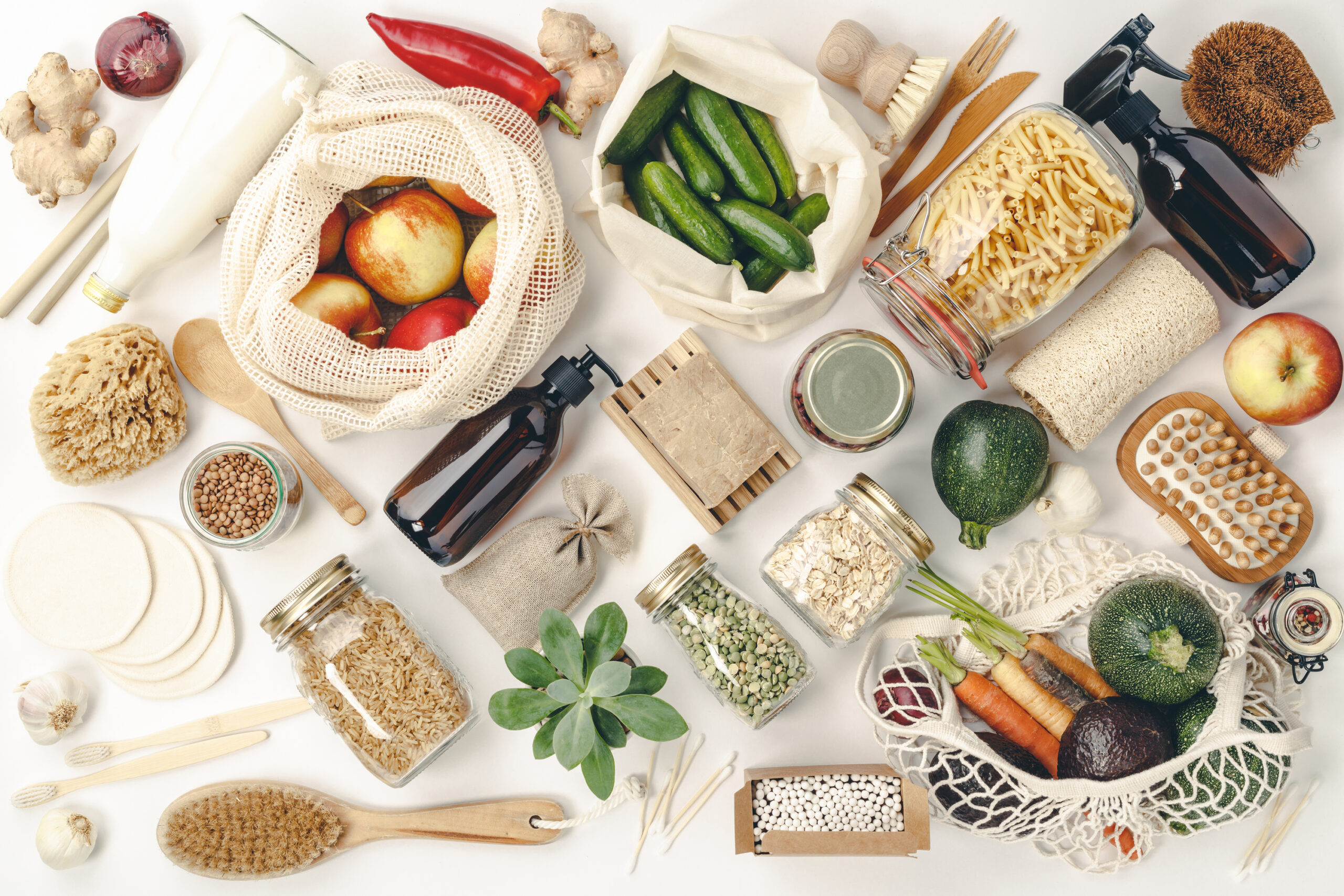
How to shop sustainably for food
By Leah Sorini
As I’ve incorporated changes to my lifestyle that might benefit our environment, I’ve often wondered if online shopping was the more or less sustainable option.
Once I started researching, it became clear that the answer was not so simple. Much depends on how you order and how it’s delivered.
If you’re ordering groceries online, your order’s carbon footprint is impacted by the delivery truck’s fuel efficiency and time frame of the requested delivery, according to the Environmental Protection Agency.
For example, when shopping online for groceries, changes that lower your greenhouse gas emissions (GHG) include:
- Selecting a wide delivery window to allow companies to create more efficient routes and potentially avoid extra trips.
- Ordering as much as possible on your list in one purchase to prevent additional or unnecessary deliveries.
- Although this may not be feasible for most, coordinating with your neighbors so that multiple people in the same area can place an order together will reduce the number of trips per delivery.
To lower your impact even further you can, walk, bike or take public transportation.
The United Nations points out that one of the best strategies is to shop for local and seasonal food to reduce your carbon emissions.
Still, the transportation of your food is a comparatively small contributor to its overall emissions.
Why food choice matters
Food production is a far greater percentage of the total GHG emissions. According to a 2008 report, transportation accounted for only 11% of the GHG emissions of food. By contrast, production accounted for 83% of food’s GHG emissions.
The more important decision may be the foods you choose. “Red meat is 150% more GHG intensive than chicken or fish,” the report stated.
“We suggest that dietary shift can be a more effective means of lowering an average household’s food-related climate footprint than buying local,” concluded the study. “Shifting less than one day per week’s worth of calories from red meat and dairy products to chicken, fish, eggs or a vegetable-based diet achieves more GHG reduction than buying all locally sourced food.”
I have shifted to a vegetarian diet, which has worked for me. I get protein from foods like lentils, chickpeas, beans, tofu, nuts, avocado and broccoli.
While switching to a plant-based diet is not feasible for everyone, changing what you eat and what you buy, like reducing the amount of red meat you eat even one day each week, can lead to a more environmentally sustainable lifestyle.
Watch for Part II: How to Shop Sustainably for Clothing.
For more on shopping sustainably see earlier posts on our blog:
Local Companies that Value Sustainability
In the meantime, let us know if you have other recommendations or feedback on these ideas in the comments below.

Leah Sorini is a communications professional with experience in writing, project management, strategic planning, community engagement and public speaking. She is involved in the Chicago chapter’s communications work. She’s passionate about raising awareness to encourage action that addresses the climate crisis.

